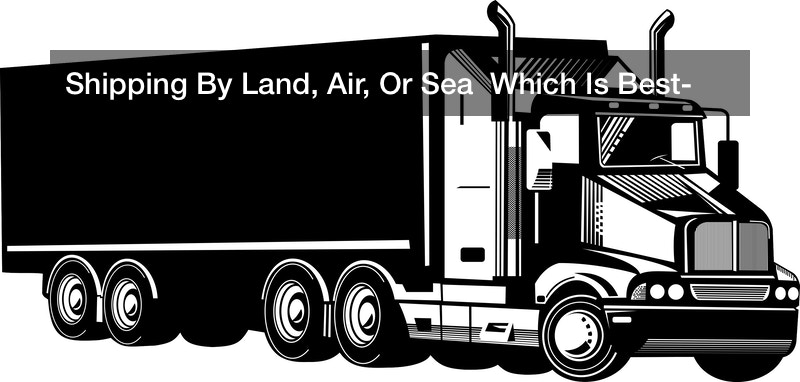As a business that sells a product, it is your job to provide transportation of your goods to all store locations. Since the days of old, boats and horses were the only method, besides hoofing it on foot. However, since then those two methods have been improved upon; faster boats with better navigation and horses have been replaced with freight shipping with trucks that can carry far more goods than a few horses ever good. An additional method of transporting goods has also been added to the mix ever since the Wright brothers first successful airplane was improved upon. With advancements, it has allowed planes to carry more than just passengers, but cargo as well.
Running a business that provides a product is already a challenge and without proper transportation of goods, it makes it even harder for your product to reach the eyes, ears and hands of potential customers.
Land, Air And Sea – What Is Best?
If you are looking for something that delivers products from point A to point B, look no further than point-to-point transportation or direct cargo transportation. While they may sound interchangeable, their methods are slightly different.
Point-to-point transportation is a direct shipping to a cargo’s final destination whether it be by plane, bus, or train. How it differs from direct cargo is that point-to-point very rarely, if ever, goes through a central hub and exchanges hands. This method allows for decreased times in traveling, since very few stops are made, offering a faster and more effective trip, even reducing the chances of your goods being damaged. Direct cargo, on the other hand, will reach a central hub, switch vehicles, but stay with the same carrier company.
As for sea freight shipping, the difference is, again, in the methods and types of sea freight shipping you need. The different modes of transportation you see on land are an analogy for what you see in the sea; big ocean vessels are like freight trucks while smaller boats are like small delivery trucks. But when it comes to imports and exports, ocean vessels carry 53 percent of American imports and 38 percent of exports by value.
Lastly, you have the power of flight. By the end of 2013, the air cargo industry extrapolated their gains and, according to IBIS World research, it was estimated that the revenue generated would reach $75 billion, almost $76 billion. It just 2012 the global aviation industry took a big slice of the cargo by transported an estimated $6.4 trillion worth of it. And that same year it handled almost two-thirds of global freight shipments, about 60 percent, according to Boeing.
There is no clear-cut winner, however, what you can be sure of is that each service, whether it be sea freight shipping, truck freight shipping or cargo plane shipping, there are many options to choose from. What matters is how important a product is. If it is local, and it is a smaller package, then perhaps a few reliable couriers is all you need. What is the sense of buying a whole freight truck for a simple envelope when a reliable courier will do? The product should match the need.





